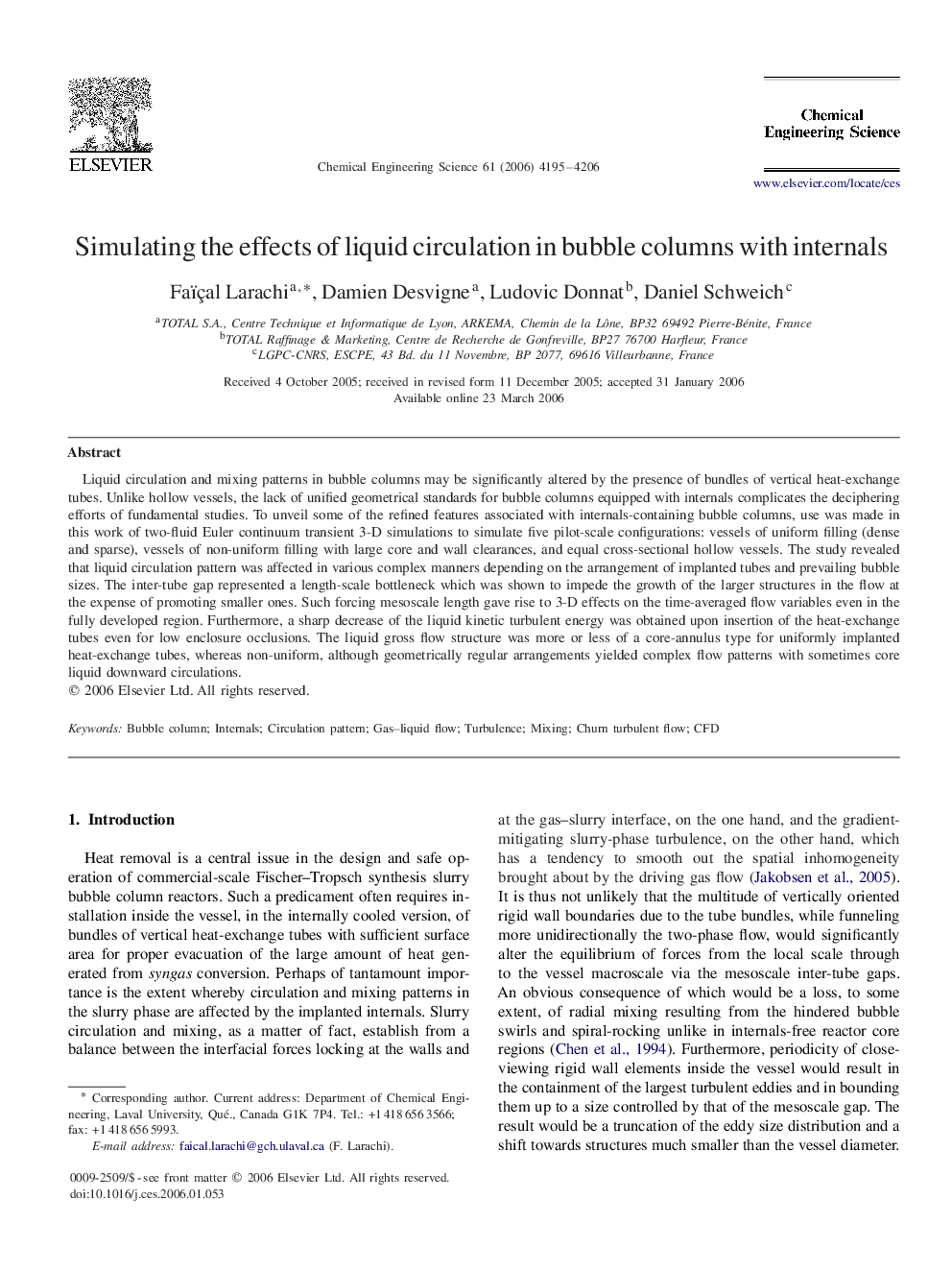| Article ID | Journal | Published Year | Pages | File Type |
|---|---|---|---|---|
| 159687 | Chemical Engineering Science | 2006 | 12 Pages |
Liquid circulation and mixing patterns in bubble columns may be significantly altered by the presence of bundles of vertical heat-exchange tubes. Unlike hollow vessels, the lack of unified geometrical standards for bubble columns equipped with internals complicates the deciphering efforts of fundamental studies. To unveil some of the refined features associated with internals-containing bubble columns, use was made in this work of two-fluid Euler continuum transient 3-D simulations to simulate five pilot-scale configurations: vessels of uniform filling (dense and sparse), vessels of non-uniform filling with large core and wall clearances, and equal cross-sectional hollow vessels. The study revealed that liquid circulation pattern was affected in various complex manners depending on the arrangement of implanted tubes and prevailing bubble sizes. The inter-tube gap represented a length-scale bottleneck which was shown to impede the growth of the larger structures in the flow at the expense of promoting smaller ones. Such forcing mesoscale length gave rise to 3-D effects on the time-averaged flow variables even in the fully developed region. Furthermore, a sharp decrease of the liquid kinetic turbulent energy was obtained upon insertion of the heat-exchange tubes even for low enclosure occlusions. The liquid gross flow structure was more or less of a core-annulus type for uniformly implanted heat-exchange tubes, whereas non-uniform, although geometrically regular arrangements yielded complex flow patterns with sometimes core liquid downward circulations.
